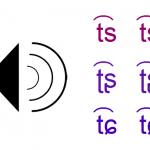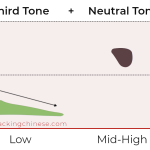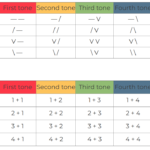Articles tagged with ‘Tones’
-
Learning to hear the sounds and tones in Mandarin
As infants, we perceive the world without categories. Learning our first language forms sound categories, aiding understanding but losing other sound distinctions. As adults learning a second language, we need to regain this ability. But how?
Read → -
24 great resources for improving your Mandarin pronunciation
Using the right resources is important when learning anything, but it’s essential when learning Mandarin pronunciation. In this article, I share my favourite resources, most of which are completely free!
Read → -
Beyond tīng bu dǒng, part 6: Why is listening in Chinese so hard?
Many people assume that the hardest part of learning Chinese must be the characters or the tones, but it turns out that most learners struggle more with listening comprehension. Why is that, and what can you do about it?
Read → -
The Hacking Chinese guide to Mandarin tones
Learning tones is a unique challenge for most learners of Chinese. What are tones? How important is it to learn tones? And how do you learn to both hear and pronounce them?
Read → -
Student Q&A, January 2024: Chinese music, too much Mandarin in the classroom, and listening in noisy environments
Is listening to music a good way to learn Chinese? How can you learn to understand Mandarin spoken in noisy environments? And what if your teacher speaks only Chinese, but you don’t understand what she says?
Read → -
Improving your Chinese pronunciation by mimicking native speakers
The best way to improve your Chinese pronunciation is to mimic native speakers. But why, and how exactly should you go about it?
Read → -
How learning some basic theory can improve your Mandarin pronunciation
Listening, mimicking and getting feedback is the best way to learn Chinese pronunciation, but unless you’re a small child or extremely talented, adding some theory to the mix can also be helpful.
Read → -
Learning the neutral tone in Mandarin
The neutral tone in Mandarin Chinese can be tricky to learn. How is it pronounced? Is it a fifth tone? And how do you know when it should be used?
Read → -
7 ways to write Mandarin tones
There are many ways of writing down the tones of Mandarin beyond the standard tone marks. Which are they and what pros and cons do they have for learners?
Read → -
A smart method to discover problems with Mandarin sounds and tones
It’s often hard to assess one’s own pronunciation when learning Mandarin. People around you might understand what you are saying, but that doesn’t necessarily mean your tones are good. Simply asking people if your pronunciation is good won’t work either, because they will often tell you that your pronunciation is good even if it’s not. So how can you find out how good your pronunciation really is?
Read →









